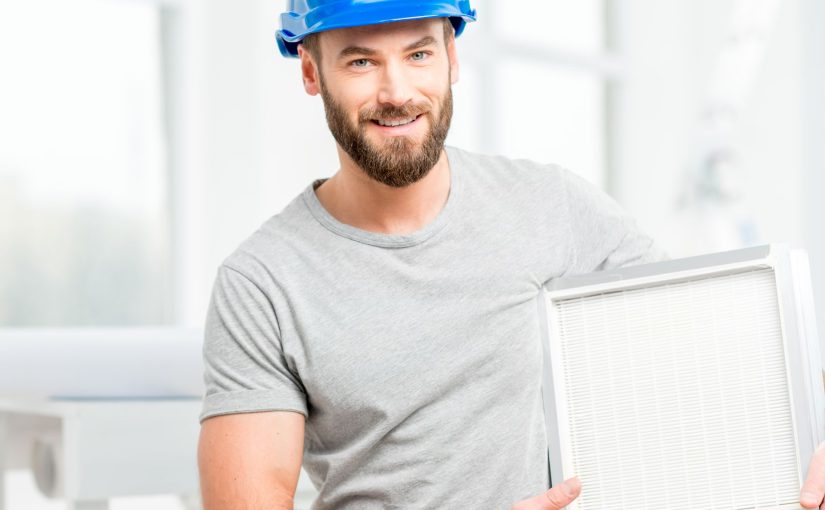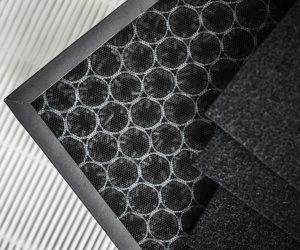Will a Hepa Filter Help with Cat Allergies?
“Yes, a HEPA filter can be effective in reducing cat allergies by capturing and removing airborne cat allergens such as dander and fur particles from the air, improving indoor air quality and potentially alleviating allergy symptoms.”
Introduction
Cat allergies are a common problem for people of all ages. The symptoms of a cat allergy can range from mild to severe, and can include sneezing, runny nose, itchy eyes, and skin rashes. In some cases, cat allergies can also lead to more serious health problems, such as asthma.
There are a number of different ways to manage cat allergies, including medication, allergy shots, and environmental controls. One environmental control that can be helpful for people with cat allergies is the use of a HEPA filter.
HEPA filters are designed to trap and remove small particles from the air, including dust, pollen, and pet dander. This can help to reduce the amount of allergens in the air, which can in turn help to relieve symptoms of cat allergies.
In this article, we will discuss the pros and cons of using a cat allergy HEPA filter, as well as the different factors to consider when choosing a HEPA filter for cat allergies. We will also provide tips on how to install, maintain, and troubleshoot a HEPA filter.
II. Pros of using a cat allergy HEPA filter
There are a number of pros to using a cat allergy HEPA filter, including:
- HEPA filters can remove up to 99.97% of airborne particles, including pet dander, fur, and saliva.
- HEPA filters can help to reduce allergy symptoms such as sneezing, coughing, and watery eyes.
- HEPA filters can create a cleaner, healthier environment for people with cat allergies.
III. Cons of using a cat allergy HEPA filter
There are a few potential drawbacks to using a cat allergy HEPA filter. These include:
- HEPA filters can be expensive.
- HEPA filters require regular maintenance, such as replacing the filter every few months.
- HEPA filters can be noisy.
- HEPA filters can trap dust and other particles, which can make them difficult to clean.
It is important to weigh the pros and cons of using a cat allergy HEPA filter before making a decision. If you have severe cat allergies, a HEPA filter may be a worthwhile investment. However, if you only have mild allergies, you may not need a HEPA filter.
II. Pros of using a cat allergy HEPA filter
Here are some of the benefits of using a cat allergy HEPA filter:
- Can remove up to 99.97% of airborne particles, including cat dander
- Can help to reduce allergy symptoms such as sneezing, coughing, and watery eyes
- Can create a cleaner, healthier environment for people with cat allergies
- Are relatively affordable and easy to maintain
V. Scenarios where a cat allergy HEPA filter would not be beneficial
There are a few scenarios where a cat allergy HEPA filter would not be beneficial. These include:
- If you are not allergic to cats
- If you do not have a cat
- If you have a cat allergy but do not spend a lot of time in the home
- If you have a cat allergy and your cat is strictly outdoors
- If you have a cat allergy and your cat is not shedding
In these cases, a cat allergy HEPA filter is not likely to provide much benefit. However, if you are allergic to cats and you spend a lot of time in the home, a cat allergy HEPA filter can be a helpful way to reduce your exposure to cat allergens.
It is important to note that a cat allergy HEPA filter is not a cure for cat allergies. It can only help to reduce your exposure to cat allergens. If you have severe cat allergies, you may also need to take medication or see an allergist.
VI. How to choose the right cat allergy HEPA filter
There are a few factors to consider when choosing a cat allergy HEPA filter.
- **Size:** The size of the filter will depend on the size of the room or area you want to clean.
- **CADR rating:** The CADR rating (clean air delivery rate) indicates how much air the filter can clean per minute. A higher CADR rating means that the filter can clean more air more quickly.
- **Filter type:** There are two main types of HEPA filters: pleated filters and electrostatic filters. Pleated filters are more effective at trapping larger particles, while electrostatic filters are more effective at trapping smaller particles.
- **Cost:** HEPA filters can range in price from a few dollars to several hundred dollars. The price of the filter will depend on the size, CADR rating, and filter type.
Once you have considered these factors, you can choose the right cat allergy HEPA filter for your needs.
VII. How to install and maintain a cat allergy HEPA filter
Installing and maintaining a cat allergy HEPA filter is relatively simple. Here are the steps involved:
- Choose a HEPA filter that is the right size for your home and that has the features you need.
- Install the filter in a central location in your home, such as in the living room or bedroom.
- Turn on the filter and let it run for at least 24 hours before using it.
- Maintain the filter by cleaning it according to the manufacturer’s instructions.
For more detailed instructions on how to install and maintain a cat allergy HEPA filter, please consult the manufacturer’s instructions.
**Troubleshooting common problems with cat allergy HEPA filters**
Troubleshooting common problems with cat allergy HEPA filters
Here are some tips for troubleshooting common problems with cat allergy HEPA filters:
- Make sure the filter is installed correctly. The filter should be installed in the correct direction, and it should be snugly fitted against the air intake.
- Clean the filter regularly. A dirty filter can reduce the efficiency of the HEPA filter and allow allergens to pass through.
- Check the air flow. If the air flow is restricted, it can reduce the efficiency of the HEPA filter.
- Move the HEPA filter to a different location. If the HEPA filter is located in a high-traffic area, it may be picking up more allergens than it can handle.
- Replace the filter if it is damaged. A damaged filter can allow allergens to pass through.
If you are still having problems with your cat allergy HEPA filter, you may need to contact the manufacturer for assistance.
 FAQs about cat allergy HEPA filters
FAQs about cat allergy HEPA filters
Q: What is a cat allergy HEPA filter?
A: A cat allergy HEPA filter is a type of air purifier that is specifically designed to remove cat allergens from the air. HEPA filters are made of a very fine mesh that traps particles as small as 0.3 microns in diameter, which is small enough to capture cat allergens.
Q: How do cat allergy HEPA filters work?
A: Cat allergy HEPA filters work by trapping cat allergens in the air as the air passes through the filter. The allergens are then trapped in the filter and cannot escape back into the air.
Q: Are cat allergy HEPA filters effective?
A: Studies have shown that cat allergy HEPA filters can be effective in reducing the levels of cat allergens in the air. However, it is important to note that no air purifier can completely remove all cat allergens from the air.
Q: How do I know if a cat allergy HEPA filter is right for me?
There are a few things to consider when choosing a cat allergy HEPA filter. These include:
- The size of the room or area that you want to clean
- The number of people in your home who are allergic to cats
- Your budget
Q: How do I install a cat allergy HEPA filter?
Most cat allergy HEPA filters are designed to be installed in a central air system. However, some models can also be used as standalone air purifiers. If you are not sure how to install your cat allergy HEPA filter, consult the manufacturer’s instructions.
Q: How do I maintain a cat allergy HEPA filter?
It is important to maintain your cat allergy HEPA filter regularly to ensure that it is working properly. The frequency with which you need to clean your filter will depend on the model of filter that you have. However, most filters should be cleaned at least once a month.
Q: What are the common problems with cat allergy HEPA filters?
There are a few common problems that can occur with cat allergy HEPA filters. These include:
- The filter becoming clogged
- The filter not working properly
- The filter being too noisy
Q: What are the benefits of using a cat allergy HEPA filter?
There are a number of benefits to using a cat allergy HEPA filter. These include:
- Reduced allergy symptoms
- Improved indoor air quality
- Peace of mind
Q: What are the drawbacks of using a cat allergy HEPA filter?
There are a few drawbacks to using a cat allergy HEPA filter. These include:
- The filters can be expensive
- The filters need to be maintained regularly
- The filters can be noisy
Q: Are there any alternatives to using a cat allergy HEPA filter?
There are a few alternatives to using a cat allergy HEPA filter. These include:
- Using a dehumidifier
- Using an air conditioner
- Using a fan
It is important to note that no alternative to a cat allergy HEPA filter can completely remove all cat allergens from the air. However, these alternatives can help to reduce the levels of cat allergens in the air and improve indoor air quality.”


 FAQs about cat allergy HEPA filters
FAQs about cat allergy HEPA filters

 Frequently Asked Questions
Frequently Asked Questions
 Do HEPA Filters Remove VOCs?
Do HEPA Filters Remove VOCs? FAQ
FAQ
 Is a Window Air Conditioner a Dehumidifier?
Is a Window Air Conditioner a Dehumidifier?
 Additional Tips and Information:
Additional Tips and Information:


 In my experience,
In my experience, Humidifier vs Diffuser for Sinus
Humidifier vs Diffuser for Sinus Humidifier and Diffuser: My Favorite Uses for both
Humidifier and Diffuser: My Favorite Uses for both
 Low humidity can also have a significant impact on plants.
Low humidity can also have a significant impact on plants. In conclusion, understanding the symptoms of low humidity in humans and plants, as well as the causes and ways to treat them, is essential for maintaining a healthy and comfortable environment.
In conclusion, understanding the symptoms of low humidity in humans and plants, as well as the causes and ways to treat them, is essential for maintaining a healthy and comfortable environment.
 Gather Necessary Supplies
Gather Necessary Supplies In conclusion, cleaning mold in an air conditioner is an important step in maintaining a healthy living environment.
In conclusion, cleaning mold in an air conditioner is an important step in maintaining a healthy living environment.
 When to Use the Window AC Reset Button:
When to Use the Window AC Reset Button: Conclusion:
Conclusion: